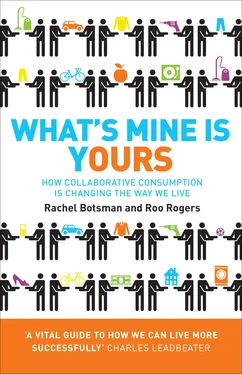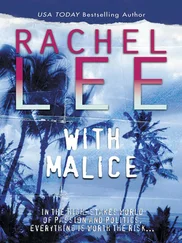The Great Pacific Garbage Patch is a hideous illustration of the way we’ve ignored the negative consequences of modern consumerism. In the past fifty years, we have consumed more goods and services than in all previous generations put together. [25] Paul Hawken, Amory Lovins and L. Hunter Lovins, Natural Capitalism (Rocky Mountain Institute, 1999), 4, www.natcap.org/sitepages/pid5.php.
Unfortunately, the consume-and-dispose engine is only going faster. Since 1980, we have consumed one-third of the planet’s resources – forests, fish, natural minerals, metals and other raw materials. [26] Tim Radford, ‘Two-Thirds of World’s Resources “Used Up”,’ Guardian (30 March 30 2005), www.guardian.co.uk/science/2005/mar/30/environment.research.
Deforestation in the tropics destroys an area the size of Greece every year – more than 250 million acres. Americans are some of the world’s worst environmental offenders. A child born today into a middle-class American family will live to about eighty years old and consume on average 2.5 million litres of water, the wood of 1,000 trees, 21,000 tonnes of petrol, 220,000 kilos of steel and 800,000 watts of electrical energy. At these rates, the average American child will produce in his or her lifetime twice the environmental impact of a Swedish child, 3 times that of an Italian, 13 times that of a Brazilian, 35 times that of an Indian and 280 times that of a Haitian. [27] Ervin Laszlo, The Chaos Point: The World at the Crossroads (Hampton Roads Publishing Company, 2006), 17.
If everyone on the planet lived like the average American child, we would need five planets to sustain them during their lifetime. [28] Global Footprint Network and WWF’s Living Planet Report (September 2009), www.footprintnetwork.org/images/uploads/EO_Day_Media_Backgrounder.pdf.
Sadly, it would seem that the vision of unlimited consumption that Victor Lebow, a retail analyst, put forward in 1955 has come to fruition. ‘Our enormously productive economy,’ he said, ‘demands that we make consumption our way of life, that we convert the buying and use of goods into rituals, that we seek spiritual satisfaction, our ego satisfaction, in consumption. The economy needs things consumed, burned up, worn out, replaced, and discarded at an ever increasing rate.’ [29] Victor Lebow, ‘Price Competition in 1955’, Journal of Retailing (Spring 1955), www.scribd.com/doc/965920/LebowArticle.
A big part of the problem is that many of our consumer behaviours have become so habitual that we are unaware of our impact. Psychologists call this consumer ‘lock-in’, as it can be difficult to make deliberate choices about what to buy and what not to buy because habits, routines, social norms and cultural values lock us into unsustainable behaviours. One example would be buying bottled water. [30] Tim Jackson, ‘Motivating Sustainable Consumption: A Review of Evidence on Consumer Behaviour and Behavioural Change’, published in a paper by the Centre for Environmental Strategy, University of Surrey (2005), www.epa.gov/sustainability/Workshop0505/5d_Jackson_Tim.pdf.
These behaviours stick because individuals acting in their own self-interest feel immediate gain, but they will not feel the losses from the impact of their actions for many years to come. We are always tempted by immediate self-gratification. At the same time, our brains cannot comprehend the cumulative impact at a collective level. If all the world’s 1 billion personal computers were switched off for just one night, it would save enough energy to light up New York City’s Empire State Building – inside and out – for more than thirty years. [31] Statistics on PC energy usage are from the 2009 P.C. US Energy Report, www.1e.com/EnergyCampaign/downloads/PC_ EnergyReport 2009-US.pdf.
Artist Chris Jordan, who creates arresting images about unimaginable statistics of western culture, puts it this way: ‘As individuals we do these things all the time every day. But when millions of people go about these unconscious behaviours it can add up to a catastrophic consequence that nobody wants, and that nobody intended.’ [32] The artist Chris Jordan talked about this idea during his talk at the TED conference (June 2008). The video can be viewed at www.ted. com/talks/chris_jordan_pictures_some_shocking_stats.html.
The Emergence of Throwaway Living
In 1907, Hugh Moore and his college roommate, Lawrence Luellen, dropped out of Harvard to pursue a business idea. At the time, people drank at public water fountains from the same ‘tin-dipper’ cups, which were rarely washed and never replaced. The friends, aware of recent findings that diseases were spread through sharing cups like these, spotted a moneymaking opportunity. Luellen had come up with the idea of a water vending machine with paper cups, and together he and Moore bought a factory, located next door to Alfred Schindler’s Dixie Doll Company. Shortly after, they introduced the first paper cup, known as the ‘Health Kup’. Moore, who never liked the original name for the cup, noticed the word ‘Dixie’ every day, as it was printed on the doll company’s front door. ‘Dixie Cups’ were born. [33] ‘Dixie Cup Company History’, Lafayette College Libraries (August 1995), www.lafayette.edu/~library/special/dixie/company.html.
The idea was not a runaway success. But eight years later, Moore and Luellen repitched Dixie Cups for ‘clinical use’. The friends and business partners became known as ‘The Cup Campaigners’ with a widespread education blitz telling the public that single repeat-use metal cups at water fountains were the main source for germ contamination. Only disposable cups were sanitary. They distributed a pamphlet with a graphic illustration of a cup in the shape of a skeleton perched on a fountain. This campaign was not all propaganda. The common drinking cup did spread serious diseases, in particular tuberculosis and smallpox, and in this sense the disposable paper cup did have a positive impact on society. Fast-forward to today, and a staggering 220 billion paper and plastic cups are used worldwide per year, with 146 billion cups consumed in North America alone. A day’s worth of cups is as high as a forty-two-storey building. [34] Jordan, TED talk.
For manufacturers, a product that is thrown away after being used, forcing the customer to keep coming back for more, creates endless profit potential; a potential first discovered in the years after World War I, when there was a great need to find new uses for the abundance of materials produced for the war piled high in warehouses. For example, an absorbent material made from celluloid that had been used for military bandages and gas mask filters later gained a new use as the disposable Kotex sanitary towel. Manufacturers also had to figure out how to transform the wartime ethic of thrift and reuse – darning socks, keeping odd pieces of string, using tea leaves to clean carpets, and sewing rags into rugs – into a culture that embraced ‘throwaway habits’ and the willingness to spend money on new ‘stuff’. During the war, the US government produced posters declaring ‘Waste Not, Want Not.’ By late 1917, the government was giving shops across the country signs to display in their windows reading ‘Beware of Thrift and Unwise Economy’, to help encourage repetitive consumption. [35] Giles Slade, Made to Break: Technology and Obsolescence in America (Harvard University Press, 2006), 25.
Advertisers touted mass-disposable goods as more convenient, time-saving and hygienic than reusable products. They became increasingly attractive in the early fifties as more women entered the workforce, were pressed for time and had greater disposable income. It is not surprising that it was against this backdrop that entire lines of disposable products flooded the market, including Kleenex tissues, Q-tips, Band-Aids, paper towels, paper straws, disposable shopping bags and so on. And along with these products came the boxes and cartons they were packaged in and the ads, catalogues and window displays to promote them; more stuff used and then thrown away. Thirty years later, in 1955, Life magazine ran a front cover with the headline ‘Throwaway Living’ and a photo of a three-child family tossing various disposables high in the air, including paper plates and trays, aluminium pie pans, and nappies. The overall message was liberation for housewives, as disposability became synonymous with convenience and a metaphor for freedom. [36] Susan Strasser, Waste and Want: A Social History of Trash (Henry Holt and Company, 1999). Strasser talks at length about the connections between disposability and woman’s liberation.
Читать дальше












